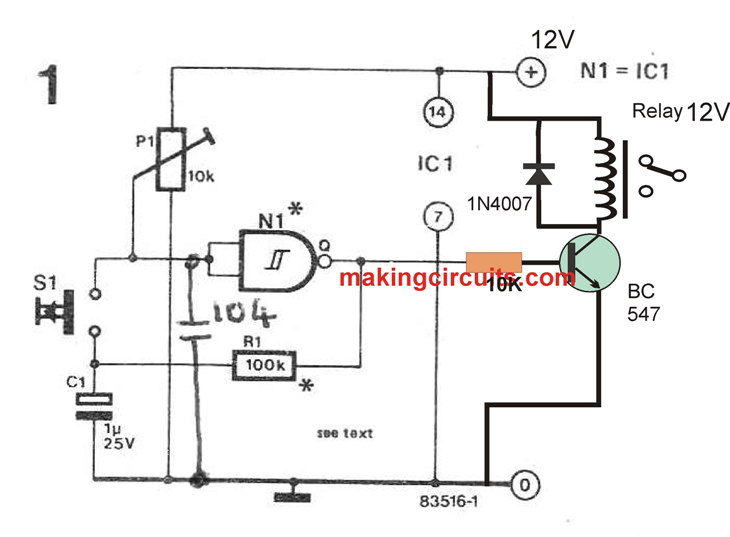A pretty helpful functionality expressed in a simple push-button ON/OFF switch using schmitt trigger circuit that may be well suited for several applications. Basically the output of the Schmitt trigger N1 changes (toggles) as soon as the switch is closed briefly.
This single push button toggle ON/OFF function is accomplished in such a straightforward circuit from the simple fact that the inputs of the trigger are performed in between the switching threshold ranges. if we assume that the output logic level (Q) of the trigger reaches logic 1, capacitor C1 will charge through R1.
If switch S1 is closed the input of the trigger will now automatically get to logic 1 (since the capacitor is completely charged) and also the Q output may naturally turn into reasoning '0'.
The capacitor C1 will at this point discharge however, not entirely as the closed switch will probably retain the level to that prevailing at the wiper of P1.
On the other hand this drop in voltage on the input of the gate is not going to trigger its output to alter state yet again since the input level will still be over a lower switching limit of the Schmitt trigger. This ‘intermediate’ voltage level will continue while the switch is pressed.
Once the switch is at some point released, C1 will subsequently discharge totally. The 0V over the capacitor will never impact the trigger because it is no longer attached to the capacitor (the switch is open).
At this point once the switch is closed the 0V may achieve the input of the gate and its output may yet again change state. It is crucial that P1 is defined accurately for the circuit to function however it will be discovered in practice this presents no issue. Different types of Schmitt trigger suit this circuit: 4093, 40106, 74LS14, 74LS132. If TTL lCs are employed, the supply voltage should be 5 V; for CMOS lCs it may lie in between 5 V and 15V.
The above discussed push-button electronic ON/OFF switch circuit can be integrated with a relay or triac to operate any type of heavy load by simply toggling the push-button ON/OFF.


Leave a Reply